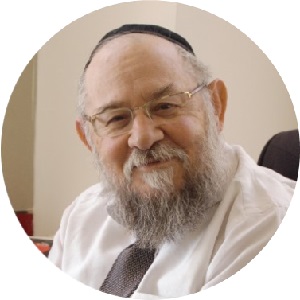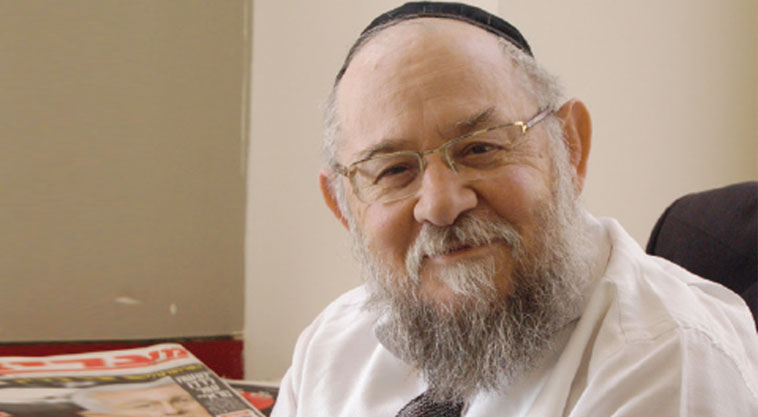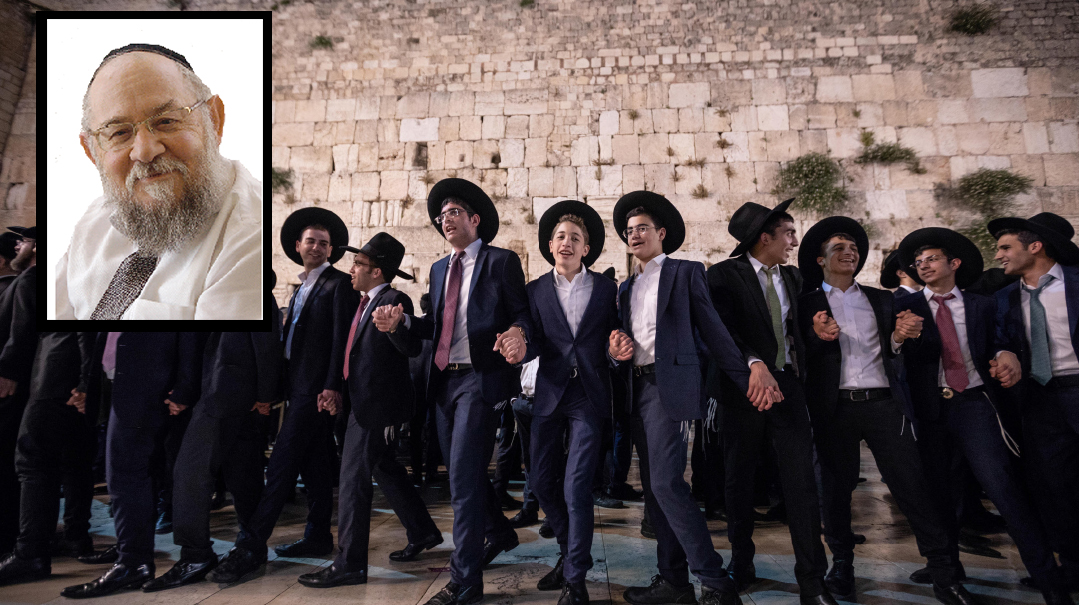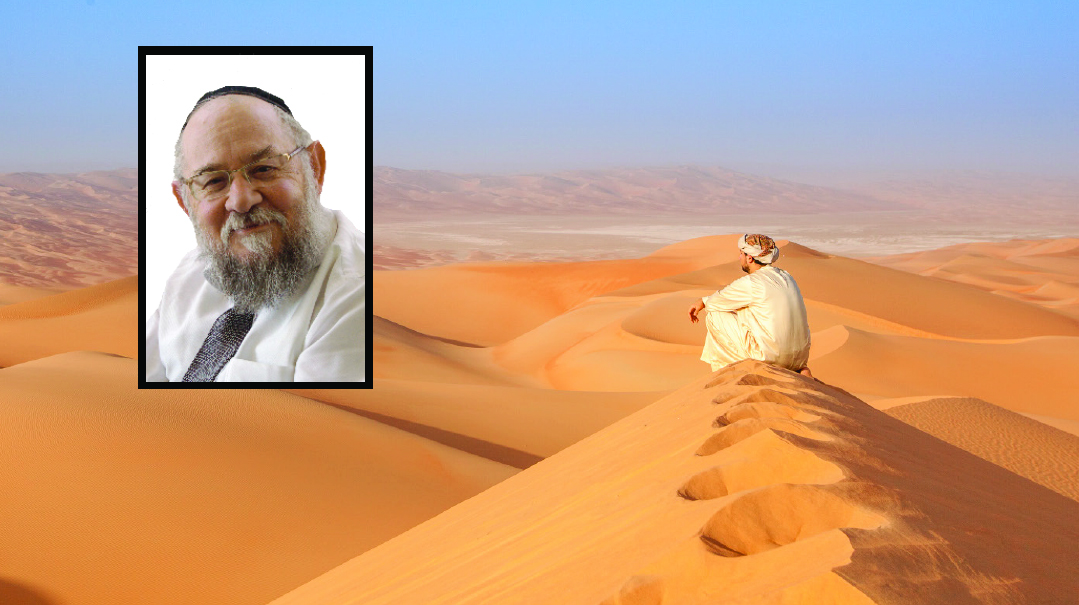Har Sinai on the Gaza Fence

Watching the kibbutzniks dancing with the Torah under the sparkling canopy, I couldn’t believe the miracle — thinking about those days when kibbutzim were no-Torah zones, when a Torah scroll donated by the father of a member was summarily thrown over the fence
Irecently received a call from Rabbi Shlomo Raanan of Ayelet Hashachar, an organization that brings Yiddishkeit to secular pockets in Eretz Yisrael. He was calling to invite me to the dedication of a new shul and a hachnassas sefer Torah in Kerem Shalom, the closest residential area to the Gaza border. Unfortunately, I wasn’t able to make the trip, and judging from the pictures and video clips I saw, I really missed something. I passed up a rare opportunity to share the experience of kabbalas haTorah with Jews who had been as far from observance as they are from lives of quiet and tranquility.
Kerem Shalom is a kibbutz on the borderline between Israel, Egypt, and the southern Gaza Strip. Since its founding over 60 years ago, it has been conveniently targeted for terrorism by its Gaza neighbors. Even during quieter intervals, life in Kerem Shalom has never been as peaceful as its name suggests, and now, with Hamas running amok on its border with Israel, the people of this remote kibbutz find themselves very close to the violence of a crazed, fanatical enemy. They’re so close, in fact, that from their windows they can see the Hamas flags across the fence, waving into their faces.
And in the midst of all this tension, these kibbutzniks celebrated the chanukas habayis of their shul.
For many years, Kerem Shalom was radically left-wing, even more so than the kibbutzim of the Socialist-Zionist Hashomer Hatzair. In the name of an illusory peace, it called for extreme concessions to the Palestinians, and needless to say, its antireligious agenda was equally extreme and vocally expressed. And now, even as the riots rage almost on their doorstep, this community has moved to reconnect itself with the live, bubbling stream of Judaism.
Don’t get the wrong impression, though. The kibbutzniks haven’t traded in their kova tembels for black hats. While things have softened in the last few years, Kerem Shalom remains a secular settlement, and whiffs of the old radicalism can still be felt in the breeze at the end of the day. Despite the agreement by consensus to have a beit knesset on the kibbutz, some faithful priests of the left still remain — strictly orthodox atheists who won’t set foot in the shul, not even to join in the communal festivities.
But let’s get back to those who did take part, undeterred by the opposition. The people of the kibbutz looked on at the joyful procession of the sefer Torah, under the traditional chuppah, to the shul that Ayelet Hashachar worked so hard to usher to completion. Old-time kibbutzniks, who had never taken part in this kind of simchah before, were also among those who took turns carrying and dancing with the sefer Torah, and the emotion was visible on their faces. They were clearly moved by the very idea of holding a real Torah scroll in their arms. The crowd dancing and capering around them was composed of young and older men from the kibbutz, bnei yeshivah from near and far, and soldiers who’d been brought to the area as reinforcements in case of escalation.
As I watched the video clips of the procession and listened to the jubilant singing, it felt just like a hachnassas sefer Torah in any frum neighborhood. And yet, what a difference! What a change we’re seeing from those dark days when the secular agricultural settlements were no-Torah zones — days when the elderly father of a member of Kibbutz Shaar HaGolan brought a sefer Torah to the settlement, and it was summarily thrown over the fence. How far we’ve come from the days, 70 years ago, or even just 50 years ago, when it was unwise for a Jew in chareidi garb to be seen on the streets of some of the militantly secular neighborhoods, and certainly unsafe for a young chareidi boy with peyos. Sometimes the attacks were physically violent; they were always verbally nasty.
I remember one incident, sort of a civil war in miniature, that occurred in the late 1950s on an Israeli army base. It started when some soldiers from the antireligious Hashomer Hatzair movement tore down the mezuzahs from their doors and threw them in the garbage. That act of desecration enraged a group of Sephardic soldiers, who retained a strong sense of reverence for what is sacred — and it actually came to a point where the two sides started shooting at each other. Today, a mezuzah is being affixed to the entrance of a new shul on a once staunchly leftist kibbutz. And who is given the honor of affixing it? A leading member of the old guard, an ex-radical.
And in the shul, they open the sefer Torah, and kibbutznikim who don’t know how to say the brachos properly are honored with aliyahs. Afterward, one of them is moved to say, “Who would ever have believed that I would be holding a sefer Torah?”
In a phone conversation after the event, Rabbi Raanan fills me in on what I missed that day. He tells me about Nir Meir, national secretary of the Hashomer Hatzair kibbutz movement, who gave a short speech in which he promised that there would be a minyan and a Torah reading in this beit knesset every Shabbos. And as the people nodded their heads in enthusiastic agreement, it was clear that something extraordinary was happening. These Jews who’d been estranged for half a century were reconnecting with the Torah-observant mainstream, discovering that under mountains of heretical socialist ideology, authentic Judaism was still there, just waiting for its opportunity to burst out, and in a mighty rush of pure water, wash away all the barriers, all the hackneyed, unfounded teachings that fed generations of Jews who, in their shortsightedness, believed that the Jewish People could be sustained without the Torah.
Kerem Shalom is just one example of the subtle yet massive change taking place in Israel today. Rabbi Raanan has already established dozens of shuls in the old left-wing strongholds. In the beginning, he would travel from place to place, using all his powers of persuasion just to be allowed to give the gift of a shul to communities that doubted the worth and usefulness of the gift. Today, secular communities seek him out on their own initiative, asking that they, too, be added to the list of kibbutzim and moshavim that now have shuls on their premises.
While a sea of troubles rages all around us and our enemies are emboldened daily to threaten our very existence, it’s inspiring to stop and take a peek at the bright ray of light piercing the darkness, giving us a glimpse of what the future really holds. (Originally featured in Mishpacha, Issue 710)
Oops! We could not locate your form.




